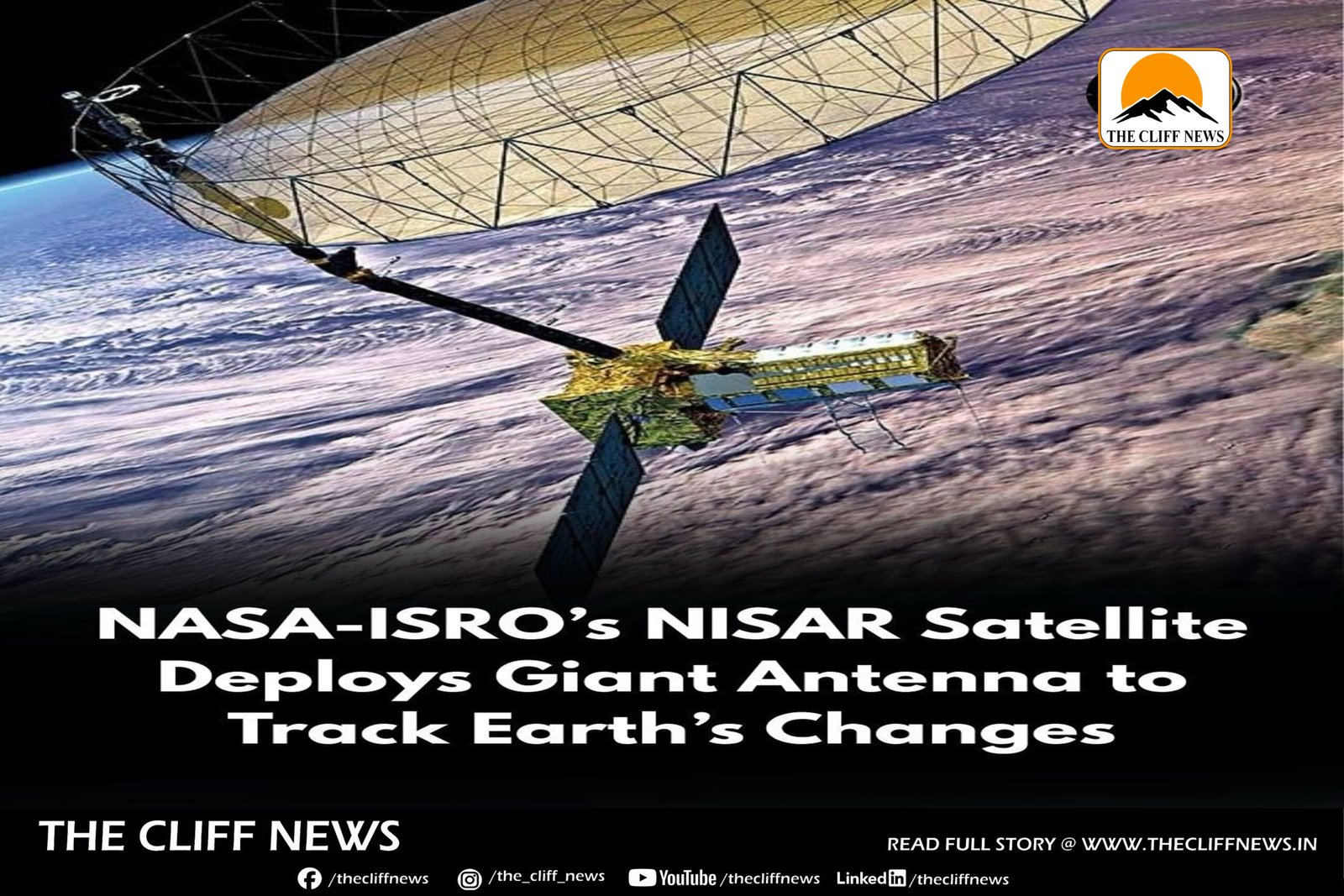Bengaluru, August 16, 2025 — In a landmark moment for global Earth science and international space collaboration, the NASA-ISRO Synthetic Aperture Radar (NISAR) satellite has successfully deployed its massive radar antenna in orbit, marking a critical step toward delivering life-saving data to communities across the globe.
Launched on July 30, 2025, from the Satish Dhawan Space Centre in Sriharikota aboard India’s GSLV-F16 rocket, NISAR is the world’s most expensive civilian Earth observation satellite. Weighing 2.8 tons and built at a cost of $1.3 billion, the joint ISRO-NASA mission is designed to track subtle changes in Earth’s surface—down to a fraction of an inch—caused by earthquakes, landslides, volcanic eruptions, glacier movements, and forest degradation.
Seventeen days after launch, on August 15, the satellite’s 12-meter radar antenna reflector—the largest ever deployed for a NASA mission in low Earth orbit—unfurled in a complex operation dubbed the “bloom.” The drum-shaped antenna, crafted from gold-plated wire mesh and supported by a nine-meter boom, will allow NISAR’s dual radar systems—NASA’s L-band and ISRO’s S-band—to peer through clouds, vegetation, and even heavy rainfall to deliver high-resolution imaging.
“This successful deployment marks a significant milestone in the capabilities of the satellite,” said Karen St. Germain, Director of NASA’s Earth Science Division. “The data NISAR will gather will have a major impact on how global communities prepare for and recover from natural disasters, strengthen infrastructure, and maintain food security.”
A “Life-Saving Mission” for India and the World
Disaster managers in India and worldwide are pinning hopes on NISAR’s capabilities. By the 2025 monsoon season, the satellite is expected to provide early warnings for landslides, glacial lake outbursts, and cloudburst risks—hazards that have increasingly plagued the Himalayan region. Experts say that no previous Earth observation mission has offered such a comprehensive “watchtower in space.”
Beyond disaster preparedness, NISAR’s data will support climate resilience, agricultural monitoring, and urban planning, making it one of the most versatile scientific tools ever placed in orbit.
Symbol of Technological Prowess
For India, the mission also carries symbolic significance. NISAR rode into space on the GSLV-F16, powered by an indigenous cryogenic engine—a technology once denied to the country but now emblematic of its growing space capabilities.
With science operations slated to begin by October 2025, NISAR is poised to redefine Earth observation and international collaboration in space science.



